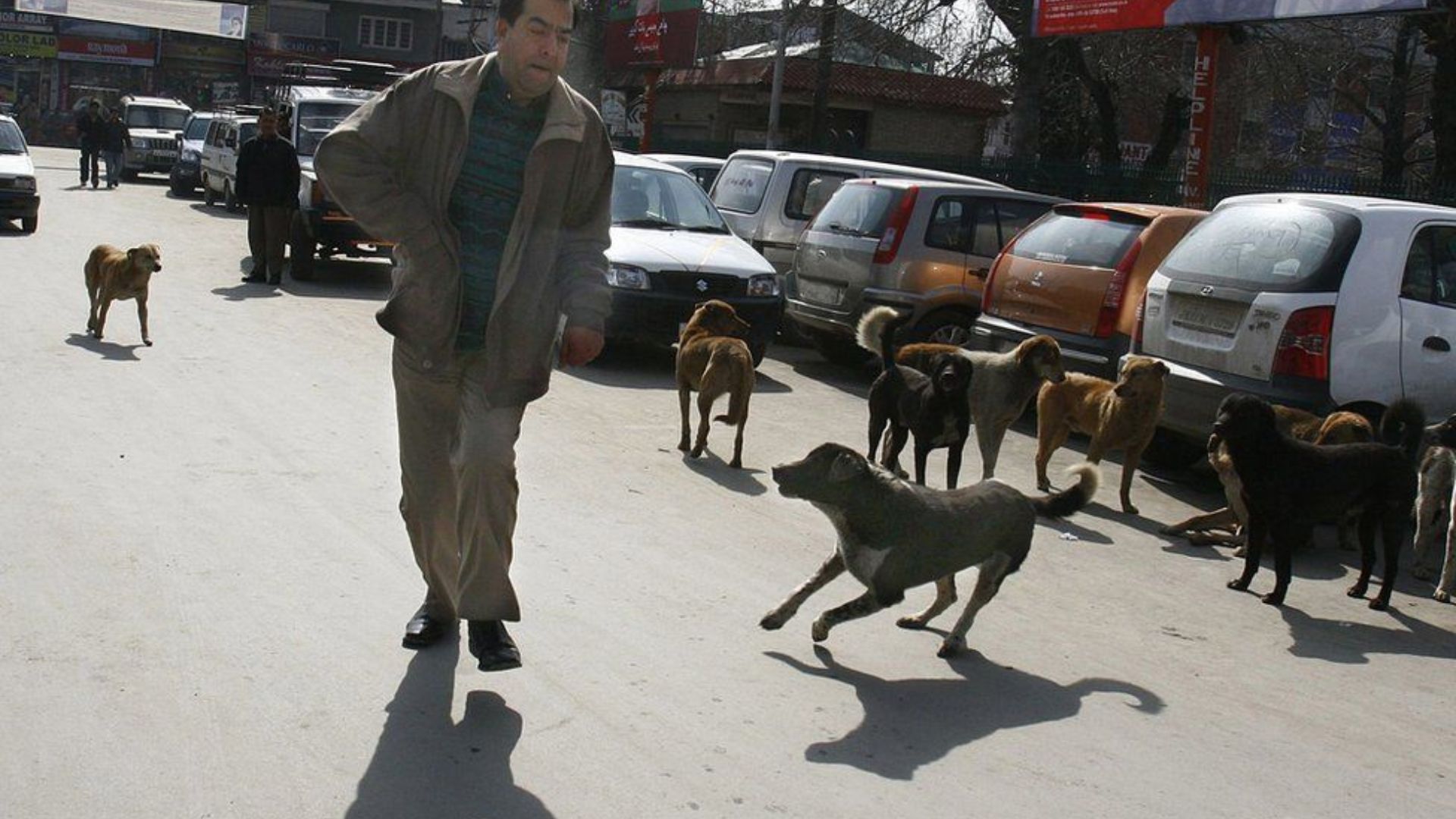
In the aftermath of a harrowing incident in Delhi’s Tughlaq Lane, where a toddler fell victim to a fatal attack by stray dogs, the discourse surrounding the management of India’s burgeoning stray dog population has once again come to the forefront. While the problem of this nature can be attributed to the stray dogs, the solution to the said crisis requires analysing the efficacy of current strategies in addressing this complex issue to ensure that the safety and well-being of humans, especially vulnerable populations like children and Persons with Disabilities (PwDs), remain a top priority.
Questioning the Stray Dog Narrative
The narrative surrounding the unfortunate demise of the toddler in Tughlaq Lane has been met with scepticism from concerned citizens. Their scepticism stems from the heavily fortified nature of the area, replete with gated compounds, extensive CCTV coverage, and a constant police presence. The incident occurred during a time when the lane was cordoned off for a function, bustling with catering staff and visitors. In such a meticulously monitored environment, the notion of a child falling victim to a stray dog attack without immediate notice appears implausible, prompting calls for a thorough investigation into the circumstances surrounding the incident.
However, the incident in Tughlaq Lane is not an isolated occurrence but rather emblematic of a broader issue that has plagued communities across India. Recent statistics reveal a troubling trend in dog bite incidents, with Bihar specifically experiencing a staggering 200-fold increase in reported cases from the previous year (with roughly 2,07,181 people suffering dog bites in contrast to mere 9,809 people in the preceding year). Similarly, in Parbhani (Maharashtra), three children fell victim to similar attacks, underscoring the widespread prevalence of such incidents nationwide.
Understanding the Scope of the Problem
India’s stray dog crisis is underscored by alarming statistics and grim realities. Over the past five years, dog attacks have claimed the lives of over 300 individuals, primarily children hailing from underprivileged backgrounds. Moreover, the country bears a significant burden of global rabies deaths, with stray dogs serving as primary vectors for the transmission of the disease. According to data from the National Institute of Communicable Diseases, nearly 96% of rabies cases in India are attributable to stray dogs, positioning the country at the forefront of global rabies mortality rates.
Regulatory Framework and Its Limitations
India’s regulatory framework for managing stray dog populations is anchored by the Animal Birth Control (Dogs) Rules, 2001. While this legislation advocates for the sterilisation of stray dogs as a means of population control, its implementation has been hindered by logistical challenges, inadequate enforcement, and insufficient resources. Sterilisation programs, while essential, often fall short of addressing the root causes of the issue and fail to mitigate the risks posed by aggressive stray dogs.
Legal Perspectives and Policy Implications
Legal precedents, such as the Karnataka High Court ruling permitting the removal or euthanasia of stray dogs in cases of imminent danger to human life, underscore the complexities inherent in balancing animal welfare with public safety. Addressing the stray dog crisis in India, however, necessitates a further comprehensive and multifaceted approach that extends beyond reactive measures.
Strengthening animal birth control programs stands as a fundamental pillar in this endeavour, emphasising the importance of sterilisation, vaccination, and humane management practices to curb population growth and mitigate risks associated with aggressive behaviour. Concurrently, enforcing responsible pet ownership laws is imperative to deter abandonment and foster accountability among pet owners through registration, licensing, and penalties for negligence. Instances of aggressive behaviour among wild or domesticated animals are often reported to local government officials, yet little to no appropriate action is taken. It is, therefore, imperative to hold these officials accountable for their inaction in addressing such concerns. Furthermore, there is a pressing need to hold local self-institutions accountable for negligence resulting in tragic incidents, advocating for compensation mechanisms akin to those afforded under wildlife protection laws. Additionally, there exists an opportunity to leverage existing legal frameworks to incentivize responsible pet ownership and promote community-based initiatives aimed at addressing the root causes of stray dog proliferation.
By embracing these holistic strategies, India can navigate towards a more humane and sustainable future where human interests can be safeguarded, mitigating the risks posed by stray dogs and fostering inclusive, community-driven solutions.
The Way Forward
The plight of stray dogs in India is a complex and multifaceted issue that demands urgent attention and concerted action. While regulatory frameworks exist, their efficacy is contingent upon robust enforcement mechanisms and sustained investment in animal welfare initiatives. By prioritising evidence-based interventions, fostering collaboration among stakeholders, and advocating for policy reforms, India can work towards mitigating the risks posed by stray dogs while safeguarding human welfare. Only through a comprehensive approach can we hope to address this pressing issue and create safer, more compassionate communities for all.
Dr.Fauzia Khan, Hon’ble Member of Parliament, Rajya Sabha and Escandita Tewari, Policy Researcher















